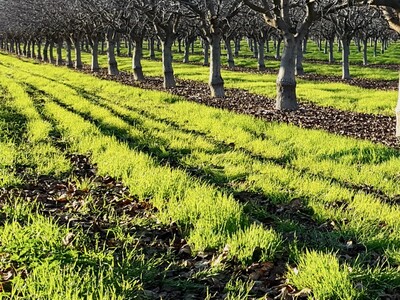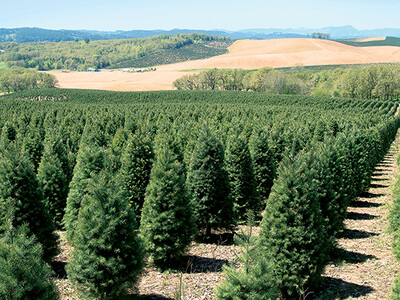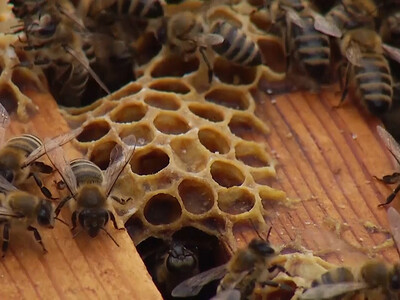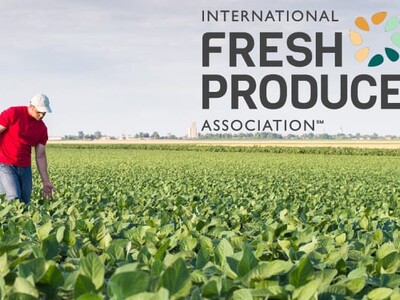$1.6 million grant
Ag department awards $1.6 million in grantsThirteen projects that propose to benefit Idaho’s agricultural industry have received a total of $1.6 million in grant money this year from the state’s ag department.
The money was awarded through the Idaho State Department of Agriculture’s specialty crop block grant program, which receives annual funding through the U.S. Department of Agriculture.
The grant money is used to promote, market and conduct research for the state’s specialty crops, which include vegetables, fruits, tree nuts, dried fruits, nursery and horticulture crops.
Since it was created in 2009, the Idaho specialty crop block grant program has awarded 227 projects a total of almost $24 million.
The funding has proved especially beneficial to some of the state’s smaller specialty crop sectors, including to Idaho’s 500 dry bean growers.
The Idaho Bean Commission has received several grants over the years that have helped fund important research projects, said IBC Executive Director Andi Woolf-Weibye.
These grants have helped supplement the IBC’s limited budget and enabled the commission to fund important research projects that benefit bean growers, she said. Without the grants, these projects may not have been feasible, she added.
“With the funding of these projects, these grants have helped catapult us to lead industry challenges,” Woolf-Weibye said. “It’s really important for us to keep ahead of these things. As a commission, it’s our job, our charge, to keep in front of any potential industry-changing challenges.”
This year, the bean commission received an $80,000 grant to help fund a University of Idaho project that seeks ways to rapidly and accurately detect a bacterial pathogen in beans.
Woolf-Weibye said this pathogen can cause high yield loss in bean crops if not detected, and it is a quarantine organism in the European Union.
Idaho is a national and global leader in the export of dry bean seed and she said it’s important that the state’s bean industry stays on top of this issue and prevents the pathogen from becoming a problem in Idaho.
“It’s a bad disease for beans and we don’t want it here in Idaho,” she said.
The Idaho Wine Commission received a $125,000 grant for a project that seeks to elevate the visibility and reputation of Idaho wine and cider.
In Idaho, there are more than 70 vineyards with a combined 1,400 acres, 64 wineries and eight cideries.
According to the grant proposal, “This project will reinforce consumer awareness and pride in Idaho’s growing wine and cider industry, highlighting the craftsmanship and agricultural excellence of local producers.”
Julianne Germain, the wine commission’s grant manager, said the specialty crop block grant program “has played a vital role in our ambition to become the best wine growing region in the Pacific Northwest.”
“Major marketing projects have been funded by these grants, which have allowed us to put the Idaho wine industry on the map both nationally and internationally,” she said.
Germain said the commission has also been awarded grants which have allowed it the opportunity to bring high-level experts to Idaho to provide educational seminars to industry members at no cost to them.
She said the main focus of this year’s grant “will be showcasing Idaho made wine for an Idaho made lifestyle.”
The Sunnyslope Wine Trail, a group of 20 wineries in the Sunnyslope wine region of southwestern Idaho, received a $100,000 grant to promote its new American Viticultural Area designation.
According to the grant proposal, the marketing effort aims to increase wine sales by at least $51,000, and result in more than 190,000 visits to Sunny Slope wineries.
“Expected outcomes include increased sales, increased consumer knowledge of the Sunnyslope wine region, and increased consumption of Idaho specialty crops,” the proposal states.
The Idaho Hop Commission received a $50,000 grant to build awareness of Idaho hops through trade shows, reverse trade missions and social media.
According to the grant proposal, the project “will include industry members attending domestic and international trade shows to learn from brewers and dealers. It will also include bringing international buyers to Idaho for them to learn first-hand the growing practices for Idaho hops.”
U.S. and Idaho hop acres have declined dramatically the past few years, following more than a decade of rapid growth that saw Idaho pass Oregon as the No. 2 hop state. This year, Oregon regained the No. 2 spot from Idaho for total hop acres.
“With the reduction in the number of hop acreage that has taken place over the past couple of years, it is important to stay in touch with the brewers and dealers,” the grant proposal states.
A $100,000 grant was awarded to the Idaho Oilseed Commission for a project aimed at optimizing nutrient and water use efficiency for Idaho’s culinary mustard varieties.
The commission will work with U of I scientists to research agronomic management practices of irrigated yellow and oriental culinary mustard grown for spice.
The grant proposal states that the “results from this project will provide stakeholders with foundational knowledge about nutrient and water management, allowing their farming operations to remain economically and environmentally viable.”
The Idaho Potato Commission received a $125,000 grant to enhance exports of Idaho potato products to Mexico.
According to the grant proposal, “The objective of the project will be to enhance distributor relationships and partnerships to ultimately increase consumption of Idaho potatoes, in all forms, throughout Mexico … This will be achieved through display building, sampling events, and trade show participation to increase awareness of Idaho potatoes.”
A $250,000 grant was awarded to the ISDA’s Division of Agricultural Inspections to modernize Idaho’s potato grading systems.
The grant proposal says updated technologies, such as high-resolution imaging, machine vision and artificial intelligence, will be used to increase grading accuracy, reduce labor inputs “and better align with quality specifications across markets.”
“This will result in objective, more consistent results, which will create more certainty for the processors and the growers,” the proposal states.
Idaho Preferred, an ISDA program, received a $291,000 grant to promote Idaho specialty crops. This will be accomplished through strategic retail partnerships, wholesaler education, agritourism marketing, and digital asset development.
“This initiative will enhance specialty crop visibility, streamline sourcing for consumers and businesses, and increase direct and retail sales through targeted advertising, producer storytelling, and in-store merchandising,” the grant proposal states.
Key activities in this proposal include a statewide consumer awareness campaign, in-store promotions, a harvest media and retailer tour, producer education workshops, expanded agritourism marketing, and the development of the Idaho Preferred Magazine.
“The expected outcome is a 5% increase in specialty crop sales, reaching approximately $98.2 million, reflecting continued growth and expanded market opportunities for Idaho growers,” the grant proposal states.
The Mid Snake Resource Conservation and Development Council received a $60,000 grant to reduce the population of codling moths and mitigate their economic damage to apple and pear trees in southcentral Idaho.
The project proposes to locate orchards throughout the valley, monitor the presence of codling moths and then release sterile male moths into infected orchards, thereby reducing the moth’s population and economic impact.
“Targeting the entire valley instead of individual orchards should result in greater reduction and decrease the occurrence of re-infestation as compared to targeting individual orchards,” the grant proposal states.
ISDA awarded Oregon State University a $150,000 grant to assess food safety risks in bulb onions, which are grown on a large scale in eastern Oregon and southwestern Idaho.
OSU researchers will explore the behavior of foodborne pathogens in damaged and diseased onion bulbs and how that could influence food safety risks throughout the dry bulb onion supply chain.
“Greenhouse and laboratory results will be used to inform a quantitative microbial risk assessment model … to support industry decision-making related to disease management and sanitation practices in storage and packing houses,” the grant proposal states.
A $16,000 grant was awarded to Sundries Farm to introduce and propagate new garlic varieties in Idaho.
The farm, which is located in the Hagerman area, will work with ISDA to develop six new varieties of garlic.
University of Idaho was awarded a $120,000 grant to develop effective methods to manage powdery scab and potato mop-top viruses. This will be done through field trials at the university’s Aberdeen and Parma research and Extension centers.
These trials will assess irrigation management, variety resistance, and disease control.
According to the grant proposal, “The project aims to identify effective biopesticides and fungicides to reduce yield losses, enhance tuber quality, and address export challenges….”
U of I received a $130,000 grant to develop novel fungicides for potato production and evaluate the efficacy of newly identified compounds against potato pathogens.
Idaho ranks No. 1 in the nation in potato production and the state’s spud crop results in billions of dollars of economic activity in the state each year.
According to the grant proposal, “The long-term goal of our multi-disciplinary University of Idaho team is to increase the sustainability of potato production, a foundational component of Idaho agriculture.”
The proposal says the U of I team has developed a novel pipeline for discovering fungicides with new modes of action.
“While traditional methods rely on large screens of similar compounds, our pipeline uses a combination of bioinformatics, molecular modeling simulations and lab, greenhouse and field experiments to discover compounds that bind to novel protein targets and stop fungal growth,” the proposal states.













